List of Authors
>>About this blog
Recent blog post
|
[Dharma]
October 16, 2016 18:00
Get off at Hamacho Station on the Shinjuku Line, stop A2, walk along Kiyosumi-dori from Meijiza, turn left at the Hisamatsucho intersection toward Ningyocho. One of the Nihonbashi Seven Lucky Gods, Kotobuki Oigami Shrine. From here, turn right at the Hisamatsu Police Station and you will find "1 sho mochi poster" Japanese confectionery "Minosha".
The owner who makes Japanese sweets with the feeling of the season is important, and the seasonal recommendation is "Kurimushiyokan". I had a pancake-like "Dorayaki". In the Edo period, we left Tomizawa Town, which prospered as a used clothes market for Tobizawa, and headed for Ningyocho.
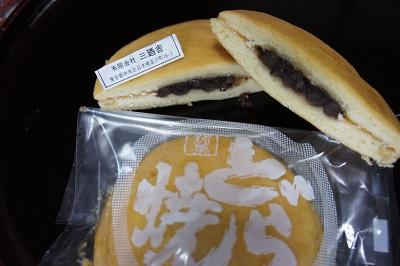 Minoya Minoya
  Turning Ningyocho Station A2 Exit, Ningyocho-dori toward the Horidome intersection, the signboard of "Ubukeya", which sells knives in Ningyocho since the Meiji Restoration, across the road. After that, look at the "Sanko Inari Shrine", turn left and walk a little. Horidome Children's Park. Kiyokazuken, a long-established Japanese confectionery in the foreground. A little earlier, there is "Seisei Inari Shrine", which is said to have been founded in 1617 (1617) in the building valley, and the first generation Danjuro came and gave his name. Turning Ningyocho Station A2 Exit, Ningyocho-dori toward the Horidome intersection, the signboard of "Ubukeya", which sells knives in Ningyocho since the Meiji Restoration, across the road. After that, look at the "Sanko Inari Shrine", turn left and walk a little. Horidome Children's Park. Kiyokazuken, a long-established Japanese confectionery in the foreground. A little earlier, there is "Seisei Inari Shrine", which is said to have been founded in 1617 (1617) in the building valley, and the first generation Danjuro came and gave his name.
Kiyokazuken was founded in 1861 (1864) in Horie-cho, Nihonbashi (currently Kofune-cho). Today's business is a stylish shop on the first floor of a building in Horidome-cho. The 7th-generation shopkeeper has been protecting noren for more than 140 years. The reputation of "Dorayaki" is a fragrant dough and a hearty bean paste, and you can feel the old-fashioned technique and newness. "Kurimanju" is also a good taste.
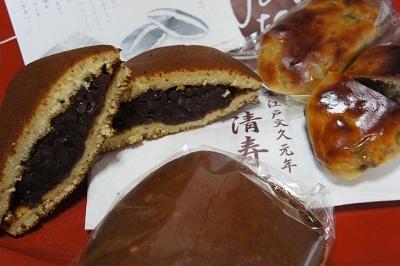 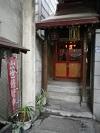 Inari Inari
 I'm going to Kobunacho. Kofune-cho in the Edo period was located between the Horidome River and is said to be one of the leading wholesale districts in Edo. In the Showa period, trading companies, textiles, and pharmaceutical companies entered the market. On this street, which faces the Horidomecho intersection from Showa-dori Honmachi 2-chome intersection, was founded in 1590 (1590), "Ibasen", a fan and fan, "Eel / Takashimaya", founded in 1875 (1875), "Nagase Sangyo", which entered Tokyo in 1911, is a long-established Japanese confectionery "Nitsuki-san". It became a town of Kobuna.......In Horidome-cho, "Sugimori Inari" of Ebisu God, and in Honmachi (formerly Otemmacho), "Ozu Washi" celebrated its 360th anniversary. Nearby is Takarada Ebisu Shrine, a thriving business. I'm going to Kobunacho. Kofune-cho in the Edo period was located between the Horidome River and is said to be one of the leading wholesale districts in Edo. In the Showa period, trading companies, textiles, and pharmaceutical companies entered the market. On this street, which faces the Horidomecho intersection from Showa-dori Honmachi 2-chome intersection, was founded in 1590 (1590), "Ibasen", a fan and fan, "Eel / Takashimaya", founded in 1875 (1875), "Nagase Sangyo", which entered Tokyo in 1911, is a long-established Japanese confectionery "Nitsuki-san". It became a town of Kobuna.......In Horidome-cho, "Sugimori Inari" of Ebisu God, and in Honmachi (formerly Otemmacho), "Ozu Washi" celebrated its 360th anniversary. Nearby is Takarada Ebisu Shrine, a thriving business.
Higetsudo was founded in 1877. Seasonal fresh sweets, red and white bunjo, New Year's kagami mochi, Noshimochi and classic Dorayaki have been loved by local people in the middle of Edo's commercial area....Recently, new flavors of sweets have been created, such as coffee live Daifuku, black madora, and Kurikinton, which were also featured on TV. In Betara City, lucky items Kirisansho and (Kurimiyokan), which are handed down as offerings for Ebisu-ko, are sold at a stall in front of Takarada Ebisu Shrine. The origin of Kirisansho The origin of Kirisansho  Sansho has long been known for its various effects, but since it is spicy, it has been reported that it has been made into a sweet confectionery with new flour to make it easier for children to eat. (Executive Landlord's talk) Sansho has long been known for its various effects, but since it is spicy, it has been reported that it has been made into a sweet confectionery with new flour to make it easier for children to eat. (Executive Landlord's talk)
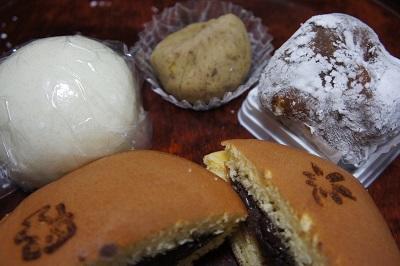 Higetsudo Higetsudo
 October 19th and 20th are the autumn feature "Nihonbashi Ebisu Kobetara City". It is held in the former Otemmacho area (Honmachi 3-chome, Otemmacho, Horidomecho). There are 400 to 500 stalls, mainly at shops that sell Beta pickles, and at night, it is crowded with banquets and open spaces over the years. October 19th and 20th are the autumn feature "Nihonbashi Ebisu Kobetara City". It is held in the former Otemmacho area (Honmachi 3-chome, Otemmacho, Horidomecho). There are 400 to 500 stalls, mainly at shops that sell Beta pickles, and at night, it is crowded with banquets and open spaces over the years.
Above
[Dharma]
09:00 on October 9, 2016
Near the current 1,2-chome Shinkawa, called by the name of "Reishijima". In the Edo period, the area was separated by the excavation of the Canal Shinkawa River, but on the banks of the river are bustling with wholesalers and white-walled sake brewery. 23 years after the war, Shinkawa was reclaimed. Here in the Shinkawa area, you will meet a shop where you can experience the history of Japanese sweets.
The first house is a short time after crossing the Reigishibashi from Kayabacho Station, turning left, Shinkawa 1-chome "Tagawado" with an old wooden carving sign. The inside of the store is a retro, elderly husband and gentle landlady, keeping the taste of the establishment of the late Meiji era. "Ogura Daifuku", "Barabimochi" and "Mushi Kanoko" each have the taste of a craftsman, and I feel the moderate sweetness and the old days.
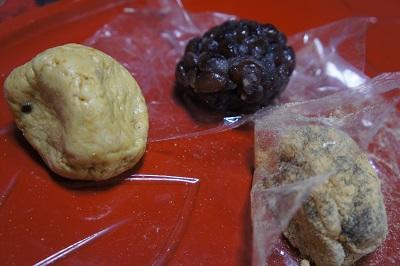 Tagawa-do Tagawa-do
The other is a long-established store founded in Otemmacho, 1850 (1850) in Shinkawa 2-chome "Mekatei Honten". When you exit Kayabacho Station No. 1, you will find a monument to the site of the map site. Turn left toward Hatchobori and you will find the memorial for the victims of the war (large air raid) and the memorial for the victims of the Great Earthquake Fire (Kanto major earthquake). You can see Kameshima Bridge at Shin-Kameshima Bridge Hashigami. The side of the bridge is "Umekatei"....Inspired by the story of Kosai Udagawa, a Dutch scholar who returned to Nagasaki, he gave out "Amerika Manju", which is called the founder of chestnut buns, and became a big hit. The second generation founded a gong-yaki (a large dorayaki with a single Atsushi skin that integrates bean paste and skin) in the early Meiji era, and restored it again in 1998. Next, he devised "Mikasayama" of Wakakusa bean paste, and the naming is said to be Danjuro 9th. The sixth generation of the Showa period devised "Umemonaka" with three kinds of plum-shaped bean paste. It is said that they are making Kirisansho and Jiryuji only in the city of Betara. <.From the company's website, Edo Tokyo late Tokugawa shogunate Gourmet> "The first priority is to have customers enjoy a pleasant space, and it is elegant in the common people....It is a long-established store where you can taste the story of the shop as it is.
 Meikatei Meikatei
By the way, the origin of Dorayaki was changed from "Souso ware, which opened in Kojimachi in the early Edo period, but we opened a store in late Tokugawa shogunate." <Based on the Dictionary of Things>
[Dharma]
14:00 on October 6, 2016
The Rio Olympics-Para Joint Triumphal Parade will be held on October 7 at about 2.5 km from Ginza 8-chome intersection to Nihonbashi Muromachi. Once again the enthusiastic  crowd crowd  was along the road. A few days ago, when the autumn rain continued, I walked on the quiet Ginza street. Near the starting point of Chuo-dori, at the middle and end points, there is a long-established Japanese confectionery shop where you can taste the skills of craftsmen with a coffee room. was along the road. A few days ago, when the autumn rain continued, I walked on the quiet Ginza street. Near the starting point of Chuo-dori, at the middle and end points, there is a long-established Japanese confectionery shop where you can taste the skills of craftsmen with a coffee room.
Ginza 6-chome "Ginza Fugetsudo" It is a long-established Japanese and Western confectionery store that has a different system from Fugetsudo in Ueno and Tokyo for more than 130 years. Located on the corner of Miyuki Street and Namiki-dori St. (Soraya in front of you), the coffee room attached to it is a spot after waiting and silver bra. You can enjoy seasonal Japanese sweets set while looking at Miyuki Street. This is the season for Japanese sweets sold by the store! "Kurimushiyokan", which has a large chestnut, has a modest sweetness, and has a good taste, is an advanced hospitality item.
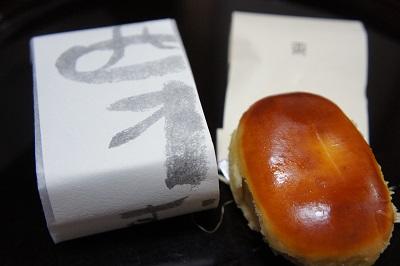 Ginza Fugetsudo Ginza Fugetsudo
 Take Hanatsubaki-dori toward Tsukiji, cross Chuo-dori and Showa-dori, and turn left on Kobikicho-dori to find Seigetsu Domoto. Founded in 1907 (1907) in the current Ginza 7-chome (formerly Kyobashi Kiboricho). The first generation sold "Miyokan and Kuzuzakura" and became a great reputation. With the knowledge of "enjoying seasonal Japanese sweets" from generation to generation, the founder left the word "Ichiyo Ichika", and the third generation creative Kimishigure "Otoshibun" is a popular signboard product ....HP) Mizuyokan and Kuzuzakura were also received, but the popular "Mame Daifuku" has the best balance of beans, rice cakes, and moderate sweetness! It's the three families of Bean Daifuku. There is a tea room. Take Hanatsubaki-dori toward Tsukiji, cross Chuo-dori and Showa-dori, and turn left on Kobikicho-dori to find Seigetsu Domoto. Founded in 1907 (1907) in the current Ginza 7-chome (formerly Kyobashi Kiboricho). The first generation sold "Miyokan and Kuzuzakura" and became a great reputation. With the knowledge of "enjoying seasonal Japanese sweets" from generation to generation, the founder left the word "Ichiyo Ichika", and the third generation creative Kimishigure "Otoshibun" is a popular signboard product ....HP) Mizuyokan and Kuzuzakura were also received, but the popular "Mame Daifuku" has the best balance of beans, rice cakes, and moderate sweetness! It's the three families of Bean Daifuku. There is a tea room.
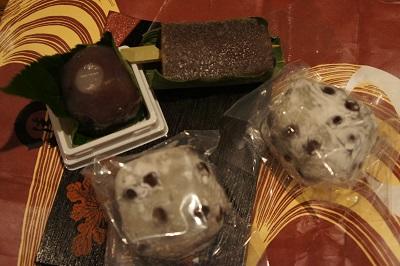 Seigetsu-do Seigetsu-do
 The history of "Tokyo Fugetsudo" in Ginza 2-chome, Chuo-dori is the Japanese shop curtain division of Fugetsudo, and Yonezu Fugetsudo opened in Wakamatsucho, Ryogoku in 1872. Tokyo Fugetsudo opened on Ginza Street in 1983. In the tea room on the second floor, you can enjoy sweets and snacks while watching the cityscape of Ginza. <No photo> The history of "Tokyo Fugetsudo" in Ginza 2-chome, Chuo-dori is the Japanese shop curtain division of Fugetsudo, and Yonezu Fugetsudo opened in Wakamatsucho, Ryogoku in 1872. Tokyo Fugetsudo opened on Ginza Street in 1983. In the tea room on the second floor, you can enjoy sweets and snacks while watching the cityscape of Ginza. <No photo>
 Crossing Kyobashi and crossing Nihonbashi, you will find Tsuruya Yoshinobu Muromachi store on the first floor of "COREDO Muromachi 3" where "Kiya" used to be. Founded in 1803 (1803) and entered Tokyo in 1960. The representative famous confectionery is lined with beautiful sweets such as "Yuzumochi" and "Kyokanze" that Tessai Tomioka loved, and you can enjoy matcha and seasonal fresh sweets at the popular sweet shop. <No photo> Crossing Kyobashi and crossing Nihonbashi, you will find Tsuruya Yoshinobu Muromachi store on the first floor of "COREDO Muromachi 3" where "Kiya" used to be. Founded in 1803 (1803) and entered Tokyo in 1960. The representative famous confectionery is lined with beautiful sweets such as "Yuzumochi" and "Kyokanze" that Tessai Tomioka loved, and you can enjoy matcha and seasonal fresh sweets at the popular sweet shop. <No photo>
 From September 28th to October 9th, the traditional culture festival "Nihonbashi Kidai Festival" will be held around Choredo Muromachi / Fukutoku no Mori. From September 28th to October 9th, the traditional culture festival "Nihonbashi Kidai Festival" will be held around Choredo Muromachi / Fukutoku no Mori.
Nihonbashi Muromachi 1-chome "Bikudo Nihonbashi Main Store" (Bikudo Tokyo HD) Bunmeido was founded in Nagasaki in 1900 (1900). The Shinjuku store was established in 1933, and in 1935, he published a big advertisement in the telephone directory, "Castella is the best, telephone number two." Established Nihonbashi Main Store in 1951. The showcase of the shop that opened the Linear is lined up with the classic masterpieces "Castella", "Miyama. Kasa-yama", "Castella Maki", and "Seasonal Japanese and Western Confectionery". You can enjoy the reputation of freshly baked Mikasa pancakes at the attached E "BUNMEIDO CAFE"....HP)

Above
1
|
Links
|
Minoya
![]()
![]() Turning Ningyocho Station A2 Exit, Ningyocho-dori toward the Horidome intersection, the signboard of "Ubukeya", which sells knives in Ningyocho since the Meiji Restoration, across the road. After that, look at the "Sanko Inari Shrine", turn left and walk a little. Horidome Children's Park. Kiyokazuken, a long-established Japanese confectionery in the foreground. A little earlier, there is "Seisei Inari Shrine", which is said to have been founded in 1617 (1617) in the building valley, and the first generation Danjuro came and gave his name.
Turning Ningyocho Station A2 Exit, Ningyocho-dori toward the Horidome intersection, the signboard of "Ubukeya", which sells knives in Ningyocho since the Meiji Restoration, across the road. After that, look at the "Sanko Inari Shrine", turn left and walk a little. Horidome Children's Park. Kiyokazuken, a long-established Japanese confectionery in the foreground. A little earlier, there is "Seisei Inari Shrine", which is said to have been founded in 1617 (1617) in the building valley, and the first generation Danjuro came and gave his name.
Inari
![]() I'm going to Kobunacho. Kofune-cho in the Edo period was located between the Horidome River and is said to be one of the leading wholesale districts in Edo. In the Showa period, trading companies, textiles, and pharmaceutical companies entered the market. On this street, which faces the Horidomecho intersection from Showa-dori Honmachi 2-chome intersection, was founded in 1590 (1590), "Ibasen", a fan and fan, "Eel / Takashimaya", founded in 1875 (1875), "Nagase Sangyo", which entered Tokyo in 1911, is a long-established Japanese confectionery "Nitsuki-san". It became a town of Kobuna.......In Horidome-cho, "Sugimori Inari" of Ebisu God, and in Honmachi (formerly Otemmacho), "Ozu Washi" celebrated its 360th anniversary. Nearby is Takarada Ebisu Shrine, a thriving business.
I'm going to Kobunacho. Kofune-cho in the Edo period was located between the Horidome River and is said to be one of the leading wholesale districts in Edo. In the Showa period, trading companies, textiles, and pharmaceutical companies entered the market. On this street, which faces the Horidomecho intersection from Showa-dori Honmachi 2-chome intersection, was founded in 1590 (1590), "Ibasen", a fan and fan, "Eel / Takashimaya", founded in 1875 (1875), "Nagase Sangyo", which entered Tokyo in 1911, is a long-established Japanese confectionery "Nitsuki-san". It became a town of Kobuna.......In Horidome-cho, "Sugimori Inari" of Ebisu God, and in Honmachi (formerly Otemmacho), "Ozu Washi" celebrated its 360th anniversary. Nearby is Takarada Ebisu Shrine, a thriving business.![]() The origin of Kirisansho
The origin of Kirisansho ![]() Sansho has long been known for its various effects, but since it is spicy, it has been reported that it has been made into a sweet confectionery with new flour to make it easier for children to eat. (Executive Landlord's talk)
Sansho has long been known for its various effects, but since it is spicy, it has been reported that it has been made into a sweet confectionery with new flour to make it easier for children to eat. (Executive Landlord's talk)Higetsudo
October 19th and 20th are the autumn feature "Nihonbashi Ebisu Kobetara City". It is held in the former Otemmacho area (Honmachi 3-chome, Otemmacho, Horidomecho). There are 400 to 500 stalls, mainly at shops that sell Beta pickles, and at night, it is crowded with banquets and open spaces over the years.

